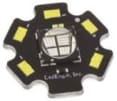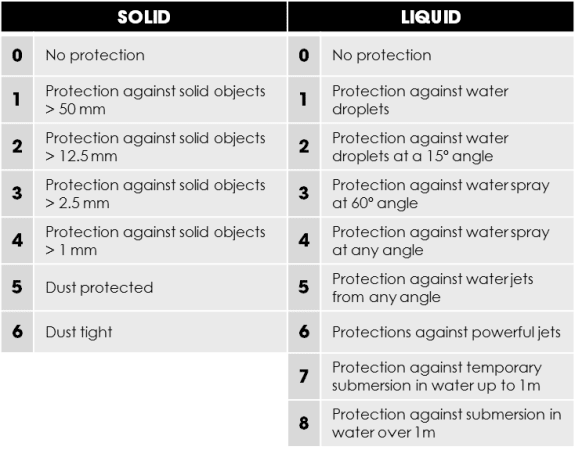How to Choose an LED Driver
Follow articleHow do you feel about this article? Help us to provide better content for you.
Thank you! Your feedback has been received.
There was a problem submitting your feedback, please try again later.
What do you think of this article?
Welcome to this guide to choosing an LED driver.
This guide includes the basic factors to consider when choosing an LED driver for your application. There is also information behind these factors to help you to make your decision. RS Components stock a wide variety of LED drivers and power supplies from the most popular brands. They also offer next-day deliver, competitive pricing and bulk discounts.
A full PDF copy of the guide can be found at the bottom of the article.
Before you start…
Have you chosen your LED(s)? We offer a wide variety of LED products to choose from including:
|
|
Visible LEDs |
These are your standard through-hole and surface mounted LEDs. |
|
|
COB LEDs |
High brightness SMD white LEDs. They consist of multiple chips /dies on one board. |
|
|
LED Arrays |
Single or multiple LEDs pre-mounted onto a PCB. |
|
|
Flexible LEDs |
Flexible strips of LEDs available in a variety of different colours and lengths. |
|
|
LED Light Engines |
Similar to LED arrays, these also have a driver IC on board. |
Constant Current vs. Constant Voltage
All drivers are either constant current (CC) or constant voltage (CV), or both. This is one of the first factors you need to consider in your decision making process. This decision will be determined by the LED or module you will be powering, the information for which can be found on the LED’s datasheet.
WHAT IS CONSTANT CURRENT?
Constant current (CC) LED drivers keep a constant electric current throughout an electronic circuit by having a variable voltage. CC drivers are often the most popular choice for LED applications. CC LED drivers can be used for individual bulbs or a chain of LEDs in series. A series means that the LEDs are all mounted together in line, for the current to flow through each one. The disadvantage is that, if the circuit is broken, none of your LEDs will work. However they generally offer better control and a more efficient system than constant voltage.
WHAT IS CONSTANT VOLTAGE?
Constant voltage (CV) LED drivers are power supplies. They have a set voltage that they supply to the electronic circuit. You would use CV LED drivers to run multiple LEDs in parallel, for example LED strips. CV power supplies can be used with LED strips that have a current limiting resistor, which most do. The voltage output must meet the voltage requirement of the entire LED string.
CV drivers can also be used for LED light engines which have a driver IC on board.
WHAT IS CONSTANT CURRENT / CONSTANT VOLTAGE?
Some LED drivers may feature both options of CV and CC. As standard they run as CV but, when output current passes the rated current limit, they switch to a CC mode. This functionality is suitable for applications which require a flexible LED Driver.
WHEN WOULD I USE CV OR CC?
CONSTANT CURRENT |
CONSTANT VOLTAGE |
|
LED Downlights |
LEDs in parallel |
|
Office Lighting |
LED Strips |
|
Residential LED Lighting |
LED Light Engines |
|
Mood Lighting |
Moving Signs |
|
Retail Lighting |
Stage Lighting |
|
Entertainment Lighting |
Architectural Lighting |
|
LED Signs |
Street Lighting |
|
High Bay |
|
|
Outdoor Lighting |
FACTORS TO CONSIDER
Output Current (mA)
When using a Constant Current LED driver, observe the current requirements of your chosen LED(s). The CC driver should then reflect that value output. LEDs data sheets state what they require, with the value given in amps (A) or milliamps (mA). 1 A = 1000 mA
There are also variable and selectable output current drivers. They give either a range, for example 0 mA to 500 mA, or stepped values like 350 mA, 500 mA, 700 mA. Your LED must fall within the chosen value(s).
LEDs can be run at a lower current to help extend its life expectancy. Using a higher current could wear the LED out a lot quicker.
Output Power (W)
This value is given in watts (W). Use an LED driver with at least the same value as your LED(s).
The driver must have a higher output power than your LEDs require for extra safety. If the output is equivalent to the LED power requirements, it is running at full power. Running at full power may cause the driver to have a shorter life span. Similarly the power requirement of the LEDs is given as an average. With tolerance added on top for multiple LEDs, you need a higher output power from the driver to cover this.
Output Voltage (V)
This value is given in volts (V). For constant voltage drivers, it requires the same output as your LED’s voltage requirements. For multiple LEDs, each LED voltage requirement is added together for a total value.
If you are using constant current, the output voltage must exceed the LED requirements.
Life Expectancy
Drivers will come with a life expectancy in thousands of hours, known as MTBF (mean time before failure). You can compare the level you are running it at to work out the advised lifetime. Running your LED driver at the recommended outputs help to extend its life span, reducing maintenance time and costs.
IP Rating
How water/dust resistant does your LED driver need to be? If your driver is going somewhere where it may come into contact with water/dust, you could use an IP65 rated driver. This means it is protected from dust and any water projected at it.
If you need something water-tight, you might need a driver with an IP67 or IP68 rating. The IP rating is given as a number. The first digit represents solid objects and the second is liquids. Here are the definitions:
Package/Encapsulation
Do you need an LED driver within an enclosure? Or will it be built into a system? Open frame LED drivers are more compact and can be designed into your application. Encapsulations provide IP ratings and protection for stand-alone LED drivers.
Termination Method
How will you connect your LED driver to your chosen application? Some LED drivers come with flying wires attached. Alternatively you could need to purchase wires separately. Screw or poke holes also exist for quick mounting of cables to the driver.
A copy of my Guide to Buying LED Drivers is attached at the bottom of the page ..







